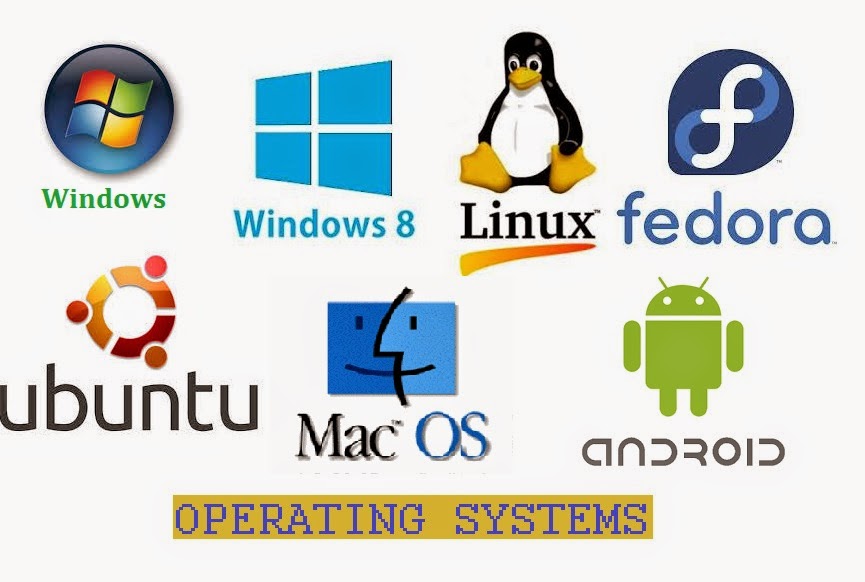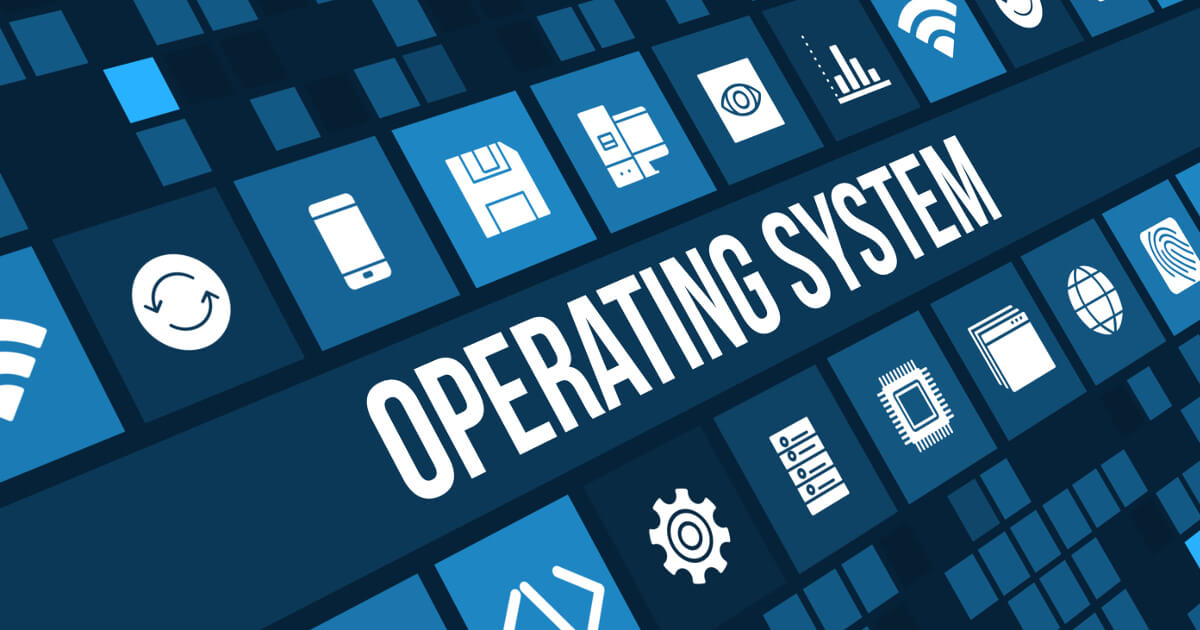Operating systems, the unseen heroes of the digital world, are the software that forms the bedrock of modern computing. From the moment you power on your device, the operating system springs into action, orchestrating a symphony of hardware and software to bring your digital life to life.
Table of Contents
Imagine a bustling city where every street, building, and vehicle operates in perfect harmony. The operating system acts as the city’s invisible infrastructure, managing the flow of information, allocating resources, and ensuring everything runs smoothly. Without it, the digital landscape would be chaotic and unusable.
Memory Management

Memory management is a crucial aspect of an operating system, responsible for allocating and managing the computer’s main memory (RAM). Efficient memory management ensures that programs can run smoothly without conflicts and that the system can utilize available memory effectively.
Paging
Paging is a memory management technique that divides the physical memory into fixed-size units called frames and the logical address space of a process into equal-sized units called pages. Each page can be loaded into any available frame in memory.
- Advantages:
- Allows for efficient use of physical memory by loading only the necessary pages into memory.
- Supports multiprogramming by allowing multiple processes to share the same physical memory.
- Provides a mechanism for memory protection by isolating processes from each other.
- Disadvantages:
- Page faults can occur when a process tries to access a page that is not currently in memory, leading to performance overhead.
- Requires additional hardware support for page table management and translation.
- Can lead to external fragmentation, where available memory is fragmented into small, unusable blocks.
Segmentation, Operating system
Segmentation is a memory management technique that divides the logical address space of a process into segments of varying sizes, each representing a logical unit of the program (e.g., code, data, stack). These segments are then loaded into non-contiguous areas of physical memory.
- Advantages:
- Provides a more logical and structured way of managing memory, reflecting the program’s organization.
- Offers better protection by allowing access control to specific segments.
- Reduces external fragmentation by allowing segments to be loaded into any available space in memory.
- Disadvantages:
- Requires more complex memory management mechanisms compared to paging.
- Can lead to internal fragmentation within segments, where memory is wasted within a segment.
- May not be as efficient as paging in terms of memory utilization.
Virtual Memory
Virtual memory is a memory management technique that allows processes to access more memory than physically available. It uses a combination of RAM and secondary storage (hard disk) to create a virtual address space that is larger than the physical address space.
- Advantages:
- Enables processes to run even if they require more memory than physically available.
- Allows for greater multiprogramming and multitasking capabilities.
- Provides memory protection by isolating processes from each other.
- Disadvantages:
- Can lead to significant performance overhead due to disk I/O operations when accessing data from secondary storage.
- Requires additional hardware and software support for virtual memory management.
- Can be susceptible to thrashing, where the system spends most of its time swapping pages between memory and disk.
Memory Allocation and Deallocation
Memory allocation involves assigning a portion of the available memory to a process or program. Memory deallocation is the process of releasing the allocated memory back to the system when it is no longer needed.
- Memory Allocation Techniques:
- First-Fit: The first available memory block that is large enough is allocated.
- Best-Fit: The smallest available memory block that is large enough is allocated.
- Worst-Fit: The largest available memory block is allocated.
- Buddy System: Memory is divided into blocks of equal size, and blocks are allocated and deallocated in powers of two.
- Memory Deallocation:
- When a process terminates, the memory allocated to it is released back to the system.
- Deallocation can be done explicitly by the programmer using functions like “free” or “delete” or implicitly by the operating system when a process terminates.
Input/Output Management: Operating System

The operating system plays a crucial role in managing the interaction between the computer system and its diverse input and output (I/O) devices. It acts as an intermediary, ensuring that applications can effectively communicate with these devices and access their capabilities.
Device Drivers
Device drivers are specialized software components that bridge the gap between the operating system and hardware devices. They translate high-level commands from the operating system into low-level instructions that the hardware can understand.
- Each device driver is tailored to a specific type of hardware, such as a keyboard, mouse, hard drive, printer, or network card.
- When an application requests an I/O operation, the operating system calls upon the appropriate device driver to handle the interaction.
- The driver communicates with the hardware device, controlling its operations and managing data transfer.
Data Flow Between Applications and I/O Devices
The flow of data between applications and I/O devices involves a series of steps orchestrated by the operating system and device drivers:
- Application Request: An application requests an I/O operation, such as reading data from a file or sending data to a printer.
- Operating System Intervention: The operating system intercepts the request and determines the appropriate device driver to handle the operation.
- Device Driver Interaction: The operating system invokes the device driver, which translates the high-level request into low-level commands that the hardware can understand.
- Hardware Operation: The device driver interacts with the hardware device, initiating the requested operation (e.g., reading data from a hard drive or sending data to a printer).
- Data Transfer: Data is transferred between the application and the I/O device, facilitated by the device driver.
- Completion Notification: The device driver informs the operating system when the I/O operation is complete.
- Application Response: The operating system notifies the application that the operation has finished, allowing the application to continue its processing.
This seamless flow of data ensures that applications can interact with I/O devices without needing to understand the complexities of hardware communication.
Real-World Applications

Operating systems are the foundation of modern computing, enabling the smooth functioning of devices and applications across various industries. From healthcare to finance and education, operating systems play a crucial role in shaping our daily lives.
Healthcare
Operating systems are essential for healthcare applications, ensuring the reliable and secure operation of medical devices and software. The healthcare industry demands high levels of reliability, security, and data integrity, which operating systems must meet.
- Electronic Health Records (EHRs): Operating systems provide the platform for EHR systems, allowing healthcare providers to manage patient data, track medical history, and coordinate care. The security and stability of these systems are paramount, ensuring patient privacy and data accuracy.
- Medical Imaging: Operating systems power medical imaging equipment, enabling the acquisition, processing, and display of images. These systems must handle large amounts of data efficiently and accurately, ensuring the quality of medical diagnoses.
- Remote Patient Monitoring: Operating systems support remote patient monitoring devices, allowing healthcare providers to track patients’ vital signs and health conditions from a distance. These systems require robust connectivity and security measures to ensure patient safety and data confidentiality.
Finance
Operating systems are critical for financial institutions, facilitating the smooth execution of transactions, the management of financial data, and the provision of online banking services. Security and reliability are paramount in the financial sector, requiring operating systems that can withstand cyberattacks and ensure data integrity.
- Online Banking: Operating systems power online banking platforms, enabling customers to access their accounts, transfer funds, and manage their finances securely. These systems must be highly secure, resistant to hacking attempts, and capable of handling high transaction volumes.
- Trading Platforms: Operating systems are essential for financial trading platforms, enabling traders to execute orders, track market data, and manage their portfolios. These systems require high performance and reliability to ensure fast and accurate execution of trades.
- Financial Data Analysis: Operating systems provide the foundation for financial data analysis applications, enabling institutions to identify trends, assess risks, and make informed investment decisions. These systems must handle massive datasets efficiently and provide tools for data visualization and analysis.
Education
Operating systems are indispensable in education, supporting the delivery of online courses, the management of student records, and the creation of interactive learning environments. Operating systems in education must be user-friendly, reliable, and secure, ensuring access to educational resources for all students.
- Learning Management Systems (LMS): Operating systems power LMS platforms, allowing educators to create and deliver online courses, track student progress, and facilitate communication. These systems require a robust and scalable infrastructure to support large numbers of students and diverse learning materials.
- Virtual Classrooms: Operating systems enable virtual classrooms, providing a platform for online learning, collaboration, and communication between students and teachers. These systems require reliable connectivity and interactive tools to facilitate effective learning experiences.
- Student Information Systems (SIS): Operating systems support SIS, allowing educational institutions to manage student records, track attendance, and generate reports. These systems must be secure and reliable, ensuring the integrity of student data and the efficient operation of educational administration.
Last Point
Operating systems are not just complex pieces of software; they are the very foundation upon which our digital world is built. From the humble smartphone to the powerful server, operating systems empower us to connect, create, and explore the vast possibilities of the digital age. As technology continues to evolve, so too will operating systems, constantly adapting to meet the ever-changing demands of our interconnected world.
Operating systems provide the foundation for running software, and Tinkercad is a great example of a program that can be used on a variety of systems. If you’re interested in getting started with 3D design, you can download Tinkercad from this website.
Once you’ve installed it, you’ll be able to explore the world of 3D modeling, which is made possible by the underlying operating system that allows the software to function.
